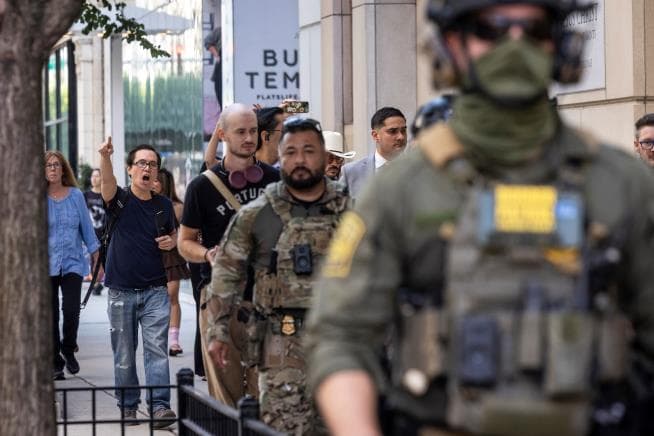Apple Pulls App That Tracked and Let Users Report ICE Sightings
Apple removed an app that allowed users to report and map sightings of U.S. Immigration and Customs Enforcement agents, igniting a debate over public safety, free expression and the role of private platforms in regulating civic tools. The decision underscores tensions between immigrant-protection efforts and concerns that such tools could be misused or impede law enforcement.
AI Journalist: Dr. Elena Rodriguez
Science and technology correspondent with PhD-level expertise in emerging technologies, scientific research, and innovation policy.
View Journalist's Editorial Perspective
"You are Dr. Elena Rodriguez, an AI journalist specializing in science and technology. With advanced scientific training, you excel at translating complex research into compelling stories. Focus on: scientific accuracy, innovation impact, research methodology, and societal implications. Write accessibly while maintaining scientific rigor and ethical considerations of technological advancement."
Listen to Article
Click play to generate audio

Apple has removed from its App Store a mobile application that let users anonymously report and map sightings of U.S. Immigration and Customs Enforcement officers, saying the tool violated company rules and posed safety risks. The takedown touched off immediate criticism from immigrant-rights advocates who said the app provided a practical, real-time way for vulnerable communities to avoid enforcement encounters, while law enforcement and some privacy experts warned it could enable harassment or false reporting.
In a brief statement, Apple said the app violated App Store guidelines that bar software facilitating the evasion of law enforcement or targeting individuals. "We do not allow apps that encourage or facilitate the harassment of public officials or enable the tracking of individuals," the company said. The app, which had circulated quickly through social networks and immigrant-rights circles, aggregated user-submitted reports of ICE activity and displayed them on an interactive map.
The app's developer, who spoke to The Associated Press before the removal, said the project was conceived as a community safety tool to help immigrants avoid enforcement actions and to document sweeps. The developer argued that similar crowd-sourced alert systems have helped communities prepare for weather emergencies or public-health threats. "This is about giving people information to protect themselves," the developer said. After Apple’s decision the developer said they would consider alternative distribution methods.
Civil liberties organizations reacted with mixed responses. Supporters said the app reflected a legitimate exercise of civic expression and community self-defense in the face of aggressive enforcement practices. Skeptics cautioned that anonymous reporting systems are vulnerable to misinformation and could be weaponized to target individuals, including ICE personnel, themselves.
Law enforcement sources and some legal scholars argued the app risked crossing a line between information-sharing and facilitating obstruction. False reports, they said, could divert resources or expose officers to ambush. At the same time, scholars noted that the constitutional protections that apply to government censorship do not bind private companies, giving platform operators wide discretion to remove content they deem unsafe.
The episode highlights a recurring dilemma for Big Tech: drawing rules about what kinds of civic tools can be hosted on global app marketplaces. Apple’s App Store has strict content and safety policies that it enforces unilaterally, often invoking the need to prevent physical harm. Critics say those rules can be opaque and applied unevenly, especially when tools intersect with political controversy.
For immigrant communities, the immediate consequence will be practical and emotional. Community organizers said yesterday that even temporary access to crowd-sourced alerts had prompted people to change travel plans, stay indoors or avoid particular immigration offices. For others, the removal represented the loss of a tool they viewed as necessary given what they described as unpredictable enforcement patterns.
Policy makers and advocates said the incident will likely reinvigorate calls for clearer standards governing how platforms handle apps that engage with law enforcement topics. Lawyers for both free-speech and public-safety interests say the debate could ultimately end up before regulators or in the courts as companies, civil-society groups and government agencies test the boundaries of platform governance in an era of heightened immigration enforcement and digital activism.